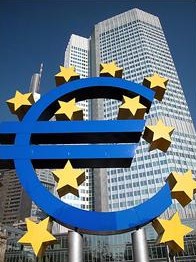By Tom Essaye – Money and Markets
In headline-driven markets like the one we’re in now, it’s very easy to focus only what’s at the center of everyone’s attention: Europe. But contrarian investors constantly strive to look beyond the market’s focus, to spot the next major trend on the horizon. And they use short-term market dislocations to properly position themselves to ride the coming trend.
True to form, markets are totally focused on whether or not the world’s major western central banks (the Fed, ECB and BOE) will be making monetary policy more accommodative and introducing more quantitative easing anytime soon. In fact, the hope for that action has helped markets rally throughout June, even though no actual policy easing has occurred.
But I’m looking at other regions of the world where monetary accommodation and policy easing has already occurred. And I have my eye on several ways to potentially ride the next bull trend these emerging markets have in store.
Emerging Markets Encouraging Growth While Western Central Banks Sit on Their Hands
Two of the “BRICs,” China and Brazil, have started aggressively cutting interest rates and taking other pro-growth measures to help stimulate their economies. Additionally, Australia also cut interest rates during the last few months as their economy slowed along with China’s.
If we’ve learned anything from investing and trading in this post-financial crisis world, it’s that when a country’s central banks begin aggressively easing monetary policy, those stock markets tend to outperform over the next several months to years. It’s been true multiple times since the crisis of ’08.
And while Europe certainly is a region we must be wary of, I don’t see anything to tell me the same won’t be true this time around.
When keeping this in mind, though we have to remember that interest rate cuts and other monetary policy tools are very slow moving and have a “lag effect.” Think of it like turning a cruise ship. It takes a while for the ship to react once you’ve turned the wheel. But once it starts turning, it’s very hard to stop.
So it shouldn’t surprise you then that these markets haven’t reacted immediately following the announcement of more monetary easing. But instead of thinking the policy isn’t working, history shows that it should be viewed as an opportunity to buy on the cheap!
Again, if markets have taught us anything over the past few years, it’s that we want to buy when central banks are doing more QE or cutting rates, and sell when they aren’t. Following that strategy could have yielded great returns in the U.S. market alone over the past few years.
My recommendation: Instead of analyzing the minutia of European political decisions, look to the emerging markets, where central banks are already ahead of the curve trying to stimulate growth.
Three ways you can consider playing the growth in the emerging markets are:
- iShares FTSE/Xinhua China 25 Index ETF (FXI),
- iShares MCSI Brazil ETF (EWZ), and
- iShares MSCI Australia ETF (EWA).
Remember, contrarians constantly look beyond the markets’ immediate concerns to find the next big trade. With emerging markets already actively stimulating their economies, they could be the next region of growth as more established central banks follow their lead.
Have a great week,
Tom








